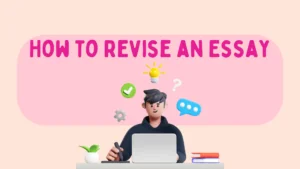So, you’ve reached the point in your academic journey where it’s time to write a dissertation proposal. And we get it — it doesn’t sound as much fun at all. But don’t worry—it’s more manageable than it seems, and we’re here to break it down for you. Think of your proposal as a map for your research, laying out where you’re going and how you plan to get there. Basically, a clear, well-structured proposal is your first step to a successful dissertation. Ready to tackle this challenge and show off your academic chops? Let’s dive in!

✅ AI Essay Writer ✅ AI Detector ✅ Plagchecker ✅ Paraphraser
✅ Summarizer ✅ Citation Generator
Dissertation Proposal: Definition, Structure & Characteristics
Let’s first clarify what is a dissertation proposal. It is, so to say, a blueprint for your research project, outlining what you intend to study and how you plan to go about it. It doesn’t mean that you must have a figured-out plan for your dissertation to write the proposal. You just need to have a somewhat clear sense of direction for your work. Think of it as a guide that helps you, and your supervisors, understand the scope and approach of your research.
Typically, a dissertation proposal includes several key components: an introduction to your topic, your aims and objectives, a literature review, your proposed methodology, the potential implications of your research, its limitations, and a bibliography. This structure helps you make sure that you cover all the essential bases, from defining your research question to detailing how you’ll collect and analyze your data.
The main characteristics of a dissertation proposal as a type of scientific writing include:
- Clarity
- Organization
- and a focus on your research’s significance.
It should present your ideas logically and persuasively, showing that your project is feasible and academically valuable. Even though the content might evolve as you dig deeper into your research, your proposal sets the foundation and direction, making it an important component in the dissertation writing process.
How to Write a Dissertation Proposal Step by Step
You still may think that writing a proposal for dissertation must be tough. Well, even though this process takes some preparation, it isn’t necessarily the hardest part. So, we decided to break down it for you step by step to make everything more clear.
1. Narrow Down Your Topic
Begin by carefully selecting a topic that fascinates you and is relevant to your field of study. Go through your past assignments and lectures to find a subject that stood out or an idea that wasn’t fully explored. You can also use Google Scholar to identify niche areas within your interest that need more research. The trickiest thing here is to keep track of all publications you refer to, including titles, authors, chapters, page numbers, URLs, and publishers, as this will be necessary for your literature review.
2. Draft an Introduction
Your introduction should clearly state your research question and provide some background on the subject. Explain why this topic is important and outline the structure of your proposal.
If you’re investigating the impact of social media on mental health, your introduction might highlight the growing use of social media and its potential effects on young adults.
3. Define Your Methodology
Detail the methods you will use to carry out your research. This includes:
- the type of data you will collect (quantitative or qualitative)
- and how you will collect it (surveys, interviews, experiments).
Explain why these methods are suitable for your research and any tools you will use. For instance, if you plan to conduct interviews, outline how you will select participants and make sure you follow ethical treatment standards.
4. Set Aims and Objectives
Clearly state what your research aims to achieve and the objectives you will pursue to reach these goals. Your aims should be specific and focused.
An aim might be to examine how social media influences the self-esteem of teenagers, with objectives including analyzing patterns of social media use and measuring changes in self-esteem.
5. Conduct a Literature Review
Summarize existing research relevant to your topic. Highlight key findings, identify gaps, and explain how your research will build on or differ from previous studies. This section demonstrates your understanding of the field and helps position your work within the academic conversation.
6. Discuss Constraints and Limitations
Acknowledge the limitations of your study, such as sample size, time constraints, or potential biases. Addressing these upfront shows that you are aware of the challenges and have considered how they might impact your research.
In case your study focuses on a specific age group, mention how this might limit the generalizability of your findings.
7. Ethical Considerations
Outline any ethical issues related to your research, such as participant confidentiality and informed consent. Explain how you will address these issues to make your study ethical. If you’re conducting face-to-face interviews, describe the measures you will take to protect participants’ privacy.
8. Bibliography
Include a properly formatted reference list or bibliography of all the sources you’ve cited in your proposal. This is where all the details you collected in the first stage of the writing process will come in handy. Follow the citation style preferred by your department, whether it’s APA, Harvard, or another format. This will help you give credit to previous researchers and help readers locate your sources.
An Outline for Writing a Dissertation Proposal
We wanted you to fully understand how to write dissertation proposal. That’s why we created an example outline below to illustrate what this type of writing might look like.
|
Dissertation Proposal: The Impact of Social Media on Mental Health of Young Adults I. Cover Page Title: The Impact of Social Media on Mental Health of Young Adults Student’s Name: [Your Name] Special Field: Psychology/Sociology Committee Chair: Professor [Name] Committee Members: Professor [Name], Professor [Name] II. Abstract This study aims to investigate the impact of social media usage on the mental health of young adults aged 18-25. Using a mixed-methods approach, the research will combine quantitative surveys and qualitative interviews to assess the correlation between social media activity and mental health indicators such as anxiety, depression, and self-esteem. The findings will contribute to the understanding of social media’s effects and inform strategies for mental health support in the digital age. III. Background of the Problem to Be Investigated Social media has become an integral part of daily life for young adults, influencing various aspects of their lives, including mental health. Previous studies have highlighted both positive and negative effects of social media, but the relationship between social media usage and mental health remains complex and underexplored. This research seeks to fill this gap by examining how different patterns of social media use affect mental health outcomes among young adults. IV. Problem to Be Investigated Research Question: How does social media usage impact the mental health of young adults aged 18-25? Key Terms: Social media: Platforms like Facebook, Instagram, Twitter, and TikTok Mental health: Indicators including anxiety, depression, and self-esteem Young adults: Individuals aged 18-25 Hypotheses: H1: Increased social media usage is associated with higher levels of anxiety and depression. H2: Positive social media interactions correlate with higher self-esteem among young adults. H3: Negative social media experiences are linked to lower self-esteem and higher anxiety and depression levels. V. Design of the Study Sources of Data Persons: The study will target young adults aged 18-25 from various universities and social groups. A sample size of 200 participants will be selected using stratified sampling to ensure diversity in gender, ethnicity, and socioeconomic status. Materials: Social media usage will be measured through self-reported questionnaires, and mental health indicators will be assessed using standardized tools like the Beck Depression Inventory and the Rosenberg Self-Esteem Scale. Procedures for Collecting Data Data Collection: Participants will complete online surveys detailing their social media usage patterns, types of interactions, and perceived impacts on mental health. Follow-up interviews will be conducted with a subset of participants to gain deeper insights into their experiences. Objectivity and Reliability: To ensure reliability, the surveys will include validated scales, and the interviews will follow a structured format. Pilot testing will be conducted to refine the survey and interview questions. Treatment and Presentation of Data Data Analysis:Quantitative data will be analyzed using statistical methods such as correlation and regression analysis to identify relationships between social media usage and mental health outcomes. Qualitative data from interviews will be analyzed using thematic analysis to identify common themes and insights. Assumptions: The study assumes that self-reported data accurately reflects participants’ social media usage and mental health. Efforts will be made to minimize bias through anonymous surveys and neutral interview questions. VI. Significance of the Study/Need of the Study Understanding the impact of social media on mental health is vital in today’s digital age, especially for young adults who are heavy users of these platforms. This study aims to provide evidence-based insights that can inform mental health support strategies, educational programs, and policy decisions to promote healthier social media usage among young adults. VII. Ethical Considerations The study will ensure participant confidentiality and obtain informed consent from all participants. Ethical approval will be sought from the university’s ethics committee. Participants will be informed about the study’s purpose, procedures, and their right to withdraw at any time without penalty. VIII. Timeline Month 1-2: Literature review and proposal approval Month 3-4: Recruitment and pilot testing Month 5-6: Data collection (surveys and interviews) Month 7-8: Data analysis Month 9-10: Writing the dissertation Month 11: Revision and submission IX. Bibliography A properly formatted list of all the sources cited in the proposal, following APA style. Examples include: Boyd, D. (2014). It’s Complicated: The Social Lives of Networked Teens. Yale University Press. Andreassen, C. S., Pallesen, S., & Griffiths, M. D. (2017). The Relationship Between Addictive Use of Social Media, Narcissism, and Self-Esteem: Findings from a Large National Survey. Addictive Behaviors, 64, 287-293. Kross, E., Verduyn, P., Demiralp, E., Park, J., Lee, D. S., Lin, N., … & Ybarra, O. (2013). Facebook Use Predicts Declines in Subjective Well-Being in Young Adults. PLoS ONE, 8(8), e69841. |
What You Should Avoid When Writing the Dissertation Proposal
When writing your dissertation proposal, it’s easy to fall into some common traps that can undermine your work. One major mistake is not providing enough context for your research question, which can leave your readers confused about the purpose and significance of your study. Always give a clear background to frame your research. Another pitfall is failing to cite significant studies in your field, known as “landmark studies.” These are needed to show that you’re building on established research.
Avoid straying from your primary research question. It’s tempting to get lost in minor details, but staying focused on your main objective will keep your proposal concise and relevant. Additionally, refrain from using your proposal to take a stance on unrelated political or social issues, as this can distract from your research’s core aim.
Your proposal should flow logically, much like a research paper. Disorganized proposals can confuse reviewers, so create an outline to keep your thoughts structured. Also, pay attention to length; proposals that are too long or too short can be problematic. Stick to the required guidelines to ensure you’re hitting the mark.
Proper formatting and correct use of citation styles like APA are essential. Overloading your proposal with citations can be just as detrimental as not citing enough. Use references thoughtfully, only to support your points without overwhelming your narrative. Lastly, always proofread your work to catch any grammatical or spelling errors. Tools like AHelp Grammar Checker can help, but a thorough personal review is invaluable to polish your proposal.
By avoiding these common mistakes, you’ll create a strong, coherent, and persuasive dissertation proposal that stands a better chance of approval.
Conclusion
You see, writing a dissertation proposal doesn’t look as tough when you know what to include and how to structure everything. And with the example outline right in from of your eyes it should be easy for you to craft something similar. Just sit down and try to start the work process, and you will notice that once you write down the first sentence, nothing will stop you from finishing everything in one sitting.
FAQ
Follow us on Reddit for more insights and updates.







Comments (0)
Welcome to A*Help comments!
We’re all about debate and discussion at A*Help.
We value the diverse opinions of users, so you may find points of view that you don’t agree with. And that’s cool. However, there are certain things we’re not OK with: attempts to manipulate our data in any way, for example, or the posting of discriminative, offensive, hateful, or disparaging material.